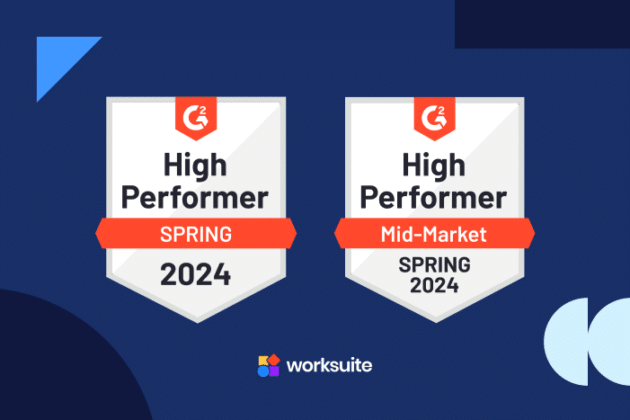
Contractor or Employee? The Risks of Misclassification


Here you’ll learn about the dangers of misclassifying workers as independent contractors and how to avoid legal risk when hiring. Partnering with Worksuite can help you establish a compliant hiring framework and protect your business. Request a call and avoid contractor misclassification.
If you’re planning to grow your team on a global scale, it’s important to ensure that you classify your workers accurately. One common hiring mistake is calling someone a contractor when they should be classified as a full-time employee with benefits and protections. If you commit contractor misclassification, you could face severe fines and penalties — and even be banned from acquiring talent within that country.
Employers sometimes misclassify contractors to avoid paying payroll taxes, social security, and Medicare taxes. If discovered, the company may be on the hook for unpaid taxes, employee wages owed, and legal penalties. Notable gig economy platforms, for example, have faced significant fines and penalties for misclassifying their workers as contractors in several countries.
Fought the law, and the law won
In the UK, Uber was forced to reclassify its workers as employees and offer paid holidays and minimum wage. In Italy, the Italian Labor Inspectorate ordered a set of food delivery gig companies (Uber Eats, Glovo, Just Eat and Deliveroo) to pay a total of €733 million in fines for worker misclassification.
Businesses hire independent contractors to complete specific tasks but do not have control over them. However, the workers may be considered employees if the company sets rules for how and when the work is done — like in the case of Uber. It is important to correctly classify workers to avoid legal complications, especially since laws vary between countries.
Misclassification is a growing issue in the United States as well. A recent 2020 study estimates that up to 30 percent of employers in the U.S. may be misclassifying employees.
When hiring managers are on a tight deadline, they may scurry to find someone from an online marketplace to solve the problem. Unfortunately, this rogue freelancer spend often doesn’t go through the proper compliance vetting and screening process, leading to misclassification risks.
It’s critical to be aware of labor laws in the countries you’re hiring from, and classify accordingly. Accurate worker classification is essential to ensure compliance and avoid legal complications as you grow your contingent workforce.
What is misclassification?
Misclassification happens when an employer mistakes an employee for an independent contractor, or vice versa. This error can result in full-time workers missing out on benefits, healthcare entitlements, and legal rights. For instance, misclassified workers may not receive unemployment insurance or the correct workers compensation, which are crucial safety nets for employees. It’s important to know the difference between these two categories to prevent any misclassifications from happening. In the U.S., for example, you can face civil suits, be ordered to pay all back wages, fines for non-compliance, and even criminal penalties. The Department of Labor frequently investigates cases of misclassification to ensure compliance with employment laws.
In every country, there are specific guidelines that employers should follow to identify workers as either independent contractors or employees. Employers should consult with legal professionals and their in-house compliance teams to ensure a workforce program that abides by these laws.
Classifying employees versus contractors
Contractors
An independent contractor is an individual hired by a company to work on specific projects and has autonomy over pay rates, workload, and work location. Following a signed service agreement, the contractor and company will collaborate on the agreed-upon project.
They may also work for multiple employers and are responsible for paying their own taxes. In some countries, there’s a maximum number of hours that they can work with a company before they’re considered employees. Most countries do not offer benefits for contractors.
In the Netherlands, contractors cannot have over 70% of their income from one employer to prevent contractor misclassification. In the U.S., an employer must issue a Form 1099-NEC to their contractors by January 31 so they can file their taxes.
Employees
A worker hired by a company, under an employer’s supervision and employment contract is called an employee. In the case of employment, the company controls many aspects of the working relationship. This includes determining the type of work, how it is done, where and when it is done, salary, training, and performance expectations.
The company is responsible for deducting taxes from the employee’s salary, providing statutory employee benefits, such as health insurance, and paying the employer’s contribution — which varies depending on the employee’s country of origin. Additionally, the company must handle tax withholdings for employees, ensuring compliance with local tax laws.
In Australia, employers must put at least 11% of their employees’ salaries into retirement funds, called superannuation, and provide a minimum of four weeks of holiday pay for every year they work. If a worker is misclassified as a contractor, they won’t receive these benefits, and you may face court-ordered fines of up to AUD 16,500 for individuals and AUD 82,500 for companies.
While some countries have tests to specifically determine if a worker is an employee or a contractor, here are a few general guidelines you should keep in mind.
A contractor:
- Owns their own equipment
- Creates their work hours
- Operates within a specific time period based on a service agreement
- Does not necessarily work exclusively for one employer (client)
An employee:
- Has an explicit employment contract
- Entitled to mandatory statutory benefits, including vacation leave and retirement
- Hired for an indefinite period of time (i.e. no contract end date)
- Direction and working hours come from employer
- Depending on the country, may have additional worker rights via labor unions or collective bargaining agreements
How to avoid misclassification of workers
A big myth about classifying your workers is thinking it only comes down to how you pay them. The classification doesn’t only pertain to payroll. It can put your company at risk as non-disclosure agreements, non-compete agreements, and IP right protections will also depend on the worker’s correct classification.
It also lets you know as the employer what rules to follow in case of termination, employee benefits, background checks, and notice periods.
In Italy, unlike the U.S., the employer must pay severance in all cases, even if the employee quits. Or in the Netherlands, if you want to terminate your employee, you must have just cause and ask for permission from the Dutch Employment Insurance Agency. For Dutch employees, you must also respect the notice periods based on the employee’s length of service, or the government will fine you.
Here are a few tips on how to avoid misclassifying your workers.
Tips to stay compliant
Review your current workforce
As with any other process in your company, it’s important to do an annual audit of your workforce to update any paperwork based on new regulations; identify rogue spending; audit freelancer engagements and confirm compliance with the local laws of their home country.
Hire an EOR or AOR
Creating a legal entity in every country can be expensive and time-consuming. That said, an EOR or AOR simplifies the process and ensures that your company remains compliant. Leveraging an Employer of Record (EOR) or Agent of Record (AOR), like Worksuite Global Engage, will help you hire and engage talent compliantly in 190 countries without worrying about missed paperwork or local labor law knowledge.
- An AOR (Agent of Record) classifies talent in compliance with local laws, and then engages and pays freelance talent on your company’s behalf.
- An EOR (Employer of Record) also classifies talent, engages & pays your independent contractors, plus employs and payrolls talent (employees) on your company’s behalf in compliance with tax law and HR operations.
Both of these services indemnify the company of compliance risk, by putting an entity in between you and the workforce that technically engages — or employs — them.
Get clear on employment contracts vs. service agreements
Certain countries have specific requirements for written offer letters and what you must include. Classifying the worker correctly at this stage is crucial. Both employment contracts and service agreements are legal documents that establish the terms of a working relationship between two parties, but serve two separate purposes.
- Employment contracts are commonly used in traditional employee classification. These contracts outline details such as the employee’s salary, job title, benefits, non-disclosure agreements, working hours, annual leave, and other important information.
- Service agreements are typically used for more independent contractor classification. The agreement is for a fixed-term period when the contractor provides specific services and outlines their fee, intellectual property rights, scope of work, and any other project details.
Grow your contingent talent network compliantly
Expanding a company by hiring and onboarding workers abroad can be a daunting and intricate process. It requires compliance with local labor laws and regulations. It’s essential to ensure you classify contractors and employees correctly.
A workforce management platform like Worksuite (plus Worksuite Global Engage, which includes EOR/AOR) can be incredibly helpful in simplifying this process. For our expertise in this area, RemotePad ranked Worksuite as the world’s leading provider for such workforce compliance services. Worksuite helps safeguard your company from legal complications by taking care of classification screenings, onboarding, and payments on your behalf.
Understanding the differences between employee and contractor classifications is crucial to minimize risk and grow your team the right way.
Hire top talent in 190 countries. Compliantly.
Learn About Worksuite Global EngageRelated Articles
Hire compliantly in 190 countries.
Worksuite Global Engage provides compliance strategies, AOR and EOR services bolted onto the #1 workforce management platform.






